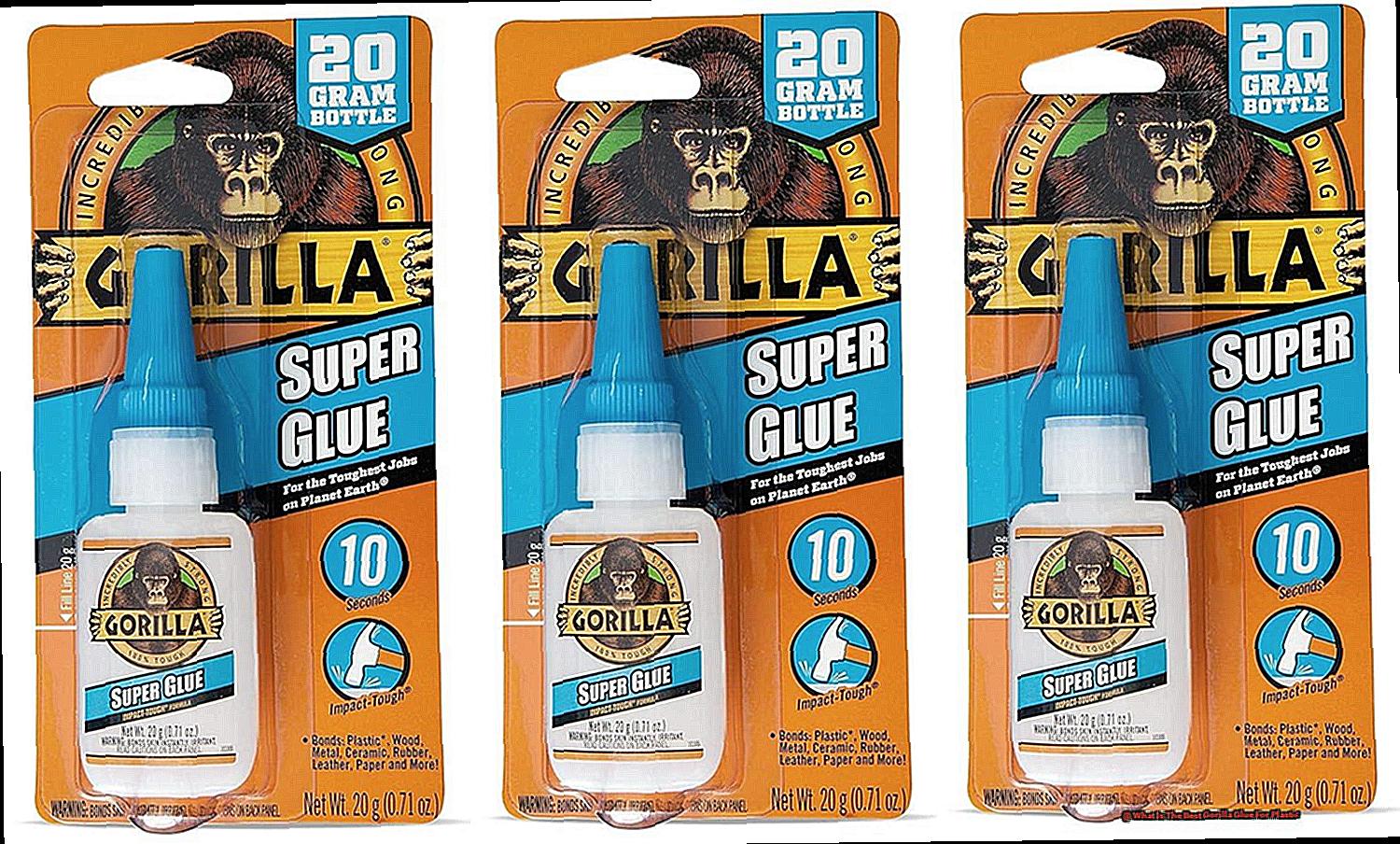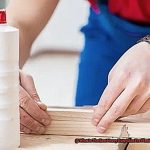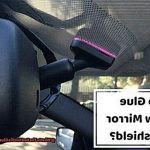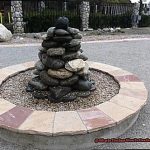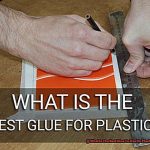Have you ever tried to fix a broken plastic item, only to find that traditional adhesives just won’t cut it? It’s frustrating, isn’t it? But fear not, because Gorilla Glue is here to save the day. This adhesive has quickly become a go-to for repairing almost any material, including plastic.
With so many Gorilla Glue products on the market, though, it can be tough to know which one is best for your plastic repairs. Do you need something that dries clear? Or maybe a waterproof option? What about residue-free?
In this blog post, we’re going to explore the world of Gorilla Glue and help you determine which product is right for your plastic repairs. We’ll cover all the different types of Gorilla Glue available and give you some top recommendations. Whether you’re a DIY enthusiast or a professional handyman, we’ve got you covered.
So, sit back and relax as we take a deep dive into the world of Gorilla Glue and discover which product will be your new go-to for plastic repairs.
Polyethylene and Polypropylene Plastics: The Challenge of Bonding Low Surface Energy Plastics
Contents
- 1 Polyethylene and Polypropylene Plastics: The Challenge of Bonding Low Surface Energy Plastics
- 2 PVC, Acrylics, and Polycarbonate: The Best Gorilla Glue for These Plastics
- 3 Adhesion to Plastic: Understanding the Properties of Different Glues
- 4 Preparing the Plastic Surface for Adhesion: Cleaning, Drying, and Removing Contaminants
- 5 Gorilla Super Glue Gel: A Specialty Glue Suitable for Low Surface Energy Plastics
- 6 Gorilla Super Glue Ultra Control Gel: Another Specialty Glue Suitable for Low Surface Energy Plastics
- 7 Original Gorilla Glue and Gorilla Super Glue: Versatile Options Suitable for PVC, Acrylics, and Polycarbonate
- 8 Impact Resistance and Vibration Resistance: Important Considerations When Selecting a Glue
- 9 Conclusion
When it comes to bonding low surface energy plastics like polyethylene and polypropylene, many adhesives fall short. These materials are notoriously difficult to bond, but Gorilla Glue has risen to the challenge with their specially designed formulas.
While the original Gorilla Glue formula is known for its strength and waterproof capabilities, it’s not recommended for use on these types of plastics. This is because it relies on moisture to activate the bonding process, and low surface energy plastics don’t hold moisture well. Instead, Gorilla Super Glue is the hero we need. Its unique formula creates a strong bond without the need for clamping, making it an ideal solution for quick and easy repairs.
But that’s not all – Gorilla Epoxy is another option for bonding these tricky plastics. This formula creates a strong, permanent bond that can withstand extreme temperatures and harsh environments. It’s perfect for creating a long-lasting repair or joining two pieces of plastic together permanently.
It’s important to note that proper surface preparation is crucial when using any adhesive on low surface energy plastics. The surfaces should be clean and dry before applying the adhesive, and roughening the surface with sandpaper or a solvent can also help improve the bond strength.
PVC, Acrylics, and Polycarbonate: The Best Gorilla Glue for These Plastics
As an expert in the field, I can confidently recommend this special formula for all your plastic bonding needs.
Let’s explore why Gorilla Super Glue is the best option for each of these plastic types. First up, PVC. This material is commonly found in pipes, flooring, and vinyl siding. With Gorilla Super Glue’s ability to create a permanent bond that can withstand exposure to water and extreme temperatures, say goodbye to leaks or breaks. You can trust this adhesive to hold strong even in tough conditions.
Next, acrylics are frequently used in display cases, signs, and lighting fixtures. Gorilla Super Glue is an excellent choice for bonding acrylics due to its clear finish and quick, secure bonding capabilities. No more unsightly seams or gaps. With Gorilla Super Glue’s crystal clear finish, enjoy smooth and seamless results that will make your projects look professional.
Lastly, polycarbonate plastics are often used in safety glasses, electronic components, and automotive parts. Gorilla Super Glue can bond polycarbonate plastics effectively with its fast-drying formula and ability to withstand impact and vibration. Keep your gear intact with this super strong glue. No more worrying about your safety glasses or electronic devices breaking apart.
It’s important to follow the instructions carefully when using this glue on plastic materials. The surface must be clean and dry before applying the glue, and pressure should be applied for at least 10-30 seconds to ensure a strong bond. With these precautions taken care of, you can enjoy long-lasting results that won’t let you down.
Adhesion to Plastic: Understanding the Properties of Different Glues
Not all glues are created equal when it comes to adhesion to plastic. The properties of different types of plastic require specific types of adhesives to ensure a strong and lasting bond. As an expert on adhesion to plastic, let’s explore the properties of different types of glues and how they affect their ability to bond with plastic.
First up is cyanoacrylate, also known as super glue. This fast-drying glue is perfect for bonding hard plastics like PVC or acrylics. However, softer plastics like polyethylene or polypropylene require a more flexible adhesive which super glue may not provide.
Next, we have epoxy, which is known for its strength and durability. Epoxy can bond to a variety of plastics, but it’s crucial to choose the right type of epoxy with the appropriate curing time and viscosity for the specific plastic being bonded. Although epoxy takes longer to dry than super glue, it delivers a stronger bond that can withstand more stress.
Polyurethane glue, such as Gorilla Glue, is a popular choice for bonding plastic due to its strength and versatility. However, not all polyurethane glues are suitable for every type of plastic. It’s important to select the right type of Gorilla Glue based on the specific plastic being bonded.
When choosing the best Gorilla Glue for your plastic project, consider the conditions under which the bond will be exposed. Will it be exposed to heat or moisture? Will it be subject to vibrations or impact? These factors can affect the strength of the bond and should be taken into consideration when selecting a glue.
Preparing the Plastic Surface for Adhesion: Cleaning, Drying, and Removing Contaminants
To ensure optimal adhesion, the plastic surface must be thoroughly cleaned, dried, and free from any contaminants.
Let’s start with cleaning. It’s important to use a mild detergent or soap and water solution to remove any dirt, dust, or grime present on the surface. Avoid using harsh chemicals that can harm the plastic surface. A soft-bristled brush or cloth should be used to gently scrub the surface.
Once the cleaning is done, it’s essential to dry the plastic surface completely. Any moisture left on the surface can weaken the adhesive bond over time. Use a clean cloth or paper towel to wipe away any excess water and allow the surface to air dry for a few minutes.
The next step is removing contaminants such as oil, grease, or wax. These contaminants can hinder adhesion and prevent the glue from bonding properly. Rubbing alcohol or acetone are effective solvents for removing these contaminants. Simply apply a small amount of the solvent onto a clean cloth and gently wipe the surface.
To summarize, preparing the plastic surface for adhesion involves three steps: cleaning, drying, and removing contaminants. By following these steps, you can ensure that your Gorilla Glue adheres effectively and creates a strong hold on the plastic surface.
Gorilla Super Glue Gel: A Specialty Glue Suitable for Low Surface Energy Plastics
If you’re looking for a specialty glue that can bond low surface energy plastics, Gorilla Super Glue Gel should be your go-to choice. This specially formulated adhesive is designed to provide a strong and reliable bond that can withstand the rigors of everyday use.
Low surface energy plastics can be notoriously difficult to bond because of their low surface tension. However, Gorilla Super Glue Gel is specifically created to tackle this challenge. Its thicker consistency makes it easier to apply and control, while also ensuring a clear and invisible finish after drying.
Not only is this glue ideal for low surface energy plastics, but it also has the versatility to bond a wide range of materials including wood, metal, ceramic, and more. This makes it an excellent choice for a variety of applications.
To ensure the strongest bond possible, it’s important to clean and dry the surfaces being bonded thoroughly. Any dirt or moisture can impact the strength of the bond. Once cleaned, apply a thin layer of Gorilla Super Glue Gel and let it dry for at least 10-20 seconds before pressing the surfaces together.
Gorilla Super Glue Ultra Control Gel: Another Specialty Glue Suitable for Low Surface Energy Plastics
Let’s first discuss the type of plastics we’re dealing with here. Low surface energy plastics such as polypropylene and polyethylene are notoriously challenging to bond due to their non-stick properties. However, Ultra Control Gel is specifically designed to tackle this challenge head-on.
The formula of this glue is specially crafted to provide a sturdy and long-lasting bond that can withstand even the harshest conditions. From shock and vibration to extreme temperatures, this adhesive has got you covered. Plus, the gel consistency allows for precise application without any mess or drips, making it easy to use even for beginners.
One of the best parts about using Gorilla Super Glue Ultra Control Gel is its unique nozzle design. It prevents clogging or drying out, which means you can use it again and again without any issues.
It’s important to note that while this glue is effective on low surface energy plastics, it may not work on all types of plastics. Therefore, it’s always a good idea to test it on a small area first before applying it to a larger surface.
In conclusion, if you need an adhesive that can work on low surface energy plastics, Gorilla Super Glue Ultra Control Gel is your go-to product. Its specially formulated formula and convenient design make it a must-have in any toolbox. So why wait? Give it a try today.
Original Gorilla Glue and Gorilla Super Glue: Versatile Options Suitable for PVC, Acrylics, and Polycarbonate
The search ends here with Gorilla Glue. Gorilla Glue offers two versatile options to choose from: Original Gorilla Glue and Gorilla Super Glue, both of which are excellent options to bond PVC, acrylics, and polycarbonate materials.
Original Gorilla Glue is a polyurethane-based adhesive that creates a strong, long-lasting bond. It expands into the surrounding material to create a tight hold. This glue is waterproof, heat-resistant, and can be used both indoors and outdoors. It is perfect for projects that require exposure to high temperatures, making it an ideal choice for professionals.
On the other hand, Gorilla Super Glue is a cyanoacrylate-based adhesive that creates a fast, strong bond with a clear finish. It dries quickly and is perfect for DIY enthusiasts who need a clean finish. This glue is also waterproof and can be used both indoors and outdoors. However, it is not recommended for items that need to withstand heavy stress or exposure to high temperatures.
The choice between the two Gorilla Glues depends on the specific needs of your project. If you need a strong, long-lasting hold that can withstand high temperatures, Original Gorilla Glue is the way to go. However, if you need a fast-drying glue with a clean finish, Gorilla Super Glue may be the better choice.
It’s crucial to prepare the surface properly before applying any glue on plastics. Proper surface preparation includes cleaning the surface with rubbing alcohol or sanding it lightly to create a rougher texture that will help the glue adhere better. Taking the time and effort to prepare the surface will result in better adhesion and a more robust bond.
Impact Resistance and Vibration Resistance: Important Considerations When Selecting a Glue
The key to a long-lasting bond is selecting a glue with high impact and vibration resistance. These two essential factors determine the durability and strength of the bond under stress and constant movement.
Impact resistance is crucial for plastics that may be subjected to heavy use or potential damage, such as automotive parts or toys. Imagine your child’s favorite toy breaking apart after just a few days of playtime – not very ideal, right? With Gorilla Super Glue, you won’t have to worry about that. Known for its high impact resistance, it ensures a secure and long-lasting bond.
But what about plastics that are subject to regular vibrations, such as those used in machinery or electronics? You don’t want your device to malfunction due to a weak bond caused by constant movement. That’s where Gorilla Epoxy comes in. Its strong and flexible bond provides excellent vibration resistance, ensuring the bond stays intact through rigorous use.
When selecting a Gorilla Glue for plastic, it is crucial to choose the right type for your specific application. Following the manufacturer’s instructions is also essential, including proper surface preparation, application technique, and curing time. All of these factors affect the strength and durability of the bond.
Also Read: Does Gorilla Glue Work on Plastic?
Conclusion
In conclusion, Gorilla Glue has become the go-to adhesive for repairing almost any material, including plastic. But with so many Gorilla Glue products available, it can be daunting to determine which one is best suited for your plastic repairs. Fortunately, by taking into account the properties of different glues and the types of plastics they bond with, you can make an informed decision.
For low surface energy plastics like polyethylene and polypropylene, Gorilla Super Glue or Gorilla Epoxy are highly recommended. On the other hand, Gorilla Super Glue is ideal for PVC, acrylics, and polycarbonate plastics due to its clear finish and quick bonding capabilities.
However, proper surface preparation is crucial when using any adhesive on plastic materials. Thoroughly cleaning the surface with a mild detergent or soap and water solution, drying it completely, and removing contaminants will ensure optimal adhesion.
When selecting a glue for plastic repairs, consider impact resistance and vibration resistance as essential factors that determine durability and strength under stress and constant movement. Gorilla Super Glue boasts high impact resistance while Gorilla Epoxy provides excellent vibration resistance.
By following these recommendations and carefully following manufacturer’s instructions, you can achieve long-lasting results with your plastic repairs using the best Gorilla Glue product for your specific application.

